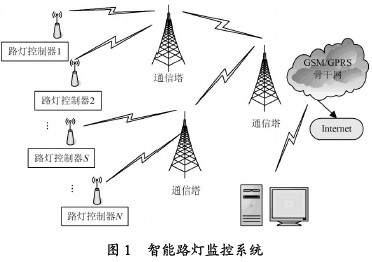0 Preface
The current huge energy consumption and the resulting energy shortages and price increases have made saving energy a very urgent task. The National/Eleventh Five-Year Plan No. 0 proposes / to save resources as a basic national policy 0, and for the first time proposes a target of reducing energy consumption per unit of GDP by about 20% during the 11th Five-Year Plan period. The former Ministry of Construction clearly stated in the 5/11-50 Green Lighting Project Planning Outline 6 that the cumulative power saving should reach 25% from 2006 to 2010.
As a new type of green light source, LED cold light source has the characteristics of energy saving, environmental protection and long life, which is the development trend of future lighting. At the beginning of 2009, the Ministry of Science and Technology of China launched the Ten City Wanhao 0 Semiconductor Lighting Application Demonstration City Program, which covers 21 domestically developed cities such as Beijing, Shanghai, Shenzhen and Wuhan. The implementation of this plan will effectively guide the healthy and rapid development of semiconductor lighting applications in China.
This topic is an intelligent street lamp energy-saving control system based on LED cold light source road lighting, which effectively solves the existing road lighting management system. It is difficult to feedback street lamp status information, no timely switch lights, and basically no power saving effect. problem.
1 LED Technology Overview
LED (Light Emitting Diode) is a solid-state semiconductor device that directly converts electricity into light [1]. LED light source has the characteristics of high energy saving, environmental protection, long life, small size, strong applicability, high stability, short response time, etc. It can be widely used in various indications, displays, decorations, backlights, general lighting and cities. Night scenes and other fields [2]. Although the price is more expensive than existing lighting equipment, it is still considered an ideal substitute.
In terms of energy saving, the LED has DC drive, ultra-low power consumption (single tube < 0. 1 W), etc. Compared with the traditional light source, the LED light source is close to the point source, single-phase illumination, good light distribution, and high light efficiency utilization. In terms of average illumination, a 50 W LED can be as bright as a 100 W high-pressure sodium lamp, which is even higher in terms of illumination. The same lighting effect is more than 50% energy saving than traditional light sources (taking practical applications as an example).
The LED light source is a solid cold light source, epoxy resin package, and there is no loose part in the lamp body, and there are no shortcomings such as filament light-emitting, heat deposition and the like. When the luminous flux is attenuated to 70%, its lifetime reaches 50 000 h, and the life of high-pressure sodium lamps is 10 000 to 20 000 h. It has better environmental benefits, pure luminescent color, no ultraviolet and infrared radiation, no mercury, no pollution, and waste can be easily recycled. Cold light source, safe to touch, is a typical green lighting source.
2 street lamp energy-saving control system overall structure
Considering the requirements of cost, monitoring range, control point setting, and capacity expansion, a combination of wireless communication and power carrier communication is adopted in this design.
The specific scheme is as follows: The entire monitoring system consists of a monitoring terminal, a centralized controller, a street light controller, and a street light. The upper computer of the system, that is, the monitoring terminal is placed in the urban street lamp management department, and the centralized controller is installed in the range of a single distribution transformer. The street lamp controller is installed on each street lamp to facilitate single lamp control. GPRS communication is adopted between the main control room and the centralized controller. The GPRS communication method is easy to realize high-speed data transmission, long-time online, and low-cost method of charging by traffic, with less hardware investment and relatively lower geographical requirements [ 3]. The power line carrier communication technology is adopted between the centralized controller and the street lamp controller. The biggest advantage of adopting the power carrier technology is that the detection of each lamp can be easily realized without laying the communication cable, and the cost of the channel construction is reduced. . The structure of the entire system is shown in Figure 1.

![<?echo $_SERVER['SERVER_NAME'];?>](/template/twentyseventeen/skin/images/header.jpg)